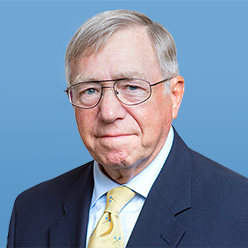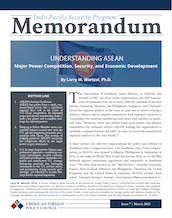The Association of Southeast Asian Nations, or ASEAN, was formed in 1967 out of an earlier organization, the 1961 Association of Southeast Asia. At its start, ASEAN consisted of just five nations: Indonesia, Malaysia, the Philippines, Singapore, and Thailand. Given the regional politics of the time, its goal was to avoid creating a military alliance and to expand cooperation with regional countries to “consolidate the existing equilibrium and peace and stability in Southeast Asia.” However, there was always some great power and alliance competition for influence within ASEAN, leading the organization to establish a regional Forum, the ARF, in order to “avoid the potential for regional conflicts in the Asia Pacific.”
A short history of collective organizations for policy and defense in Southeast Asia is important here. The Southeast Asia Treaty Organization, or SEATO, was formed in Manila, Philippines in September of 1954, in the wake of World War II and the Korean War, as a Cold War bulwark against communist aggression and expansion in Southeast Asia. The bloc, also known as the “Manila Pact,” included Australia, France, New Zealand, Pakistan, the Philippines, Thailand, the United Kingdom, and the United States as members. SEATO, scholars have noted, “emerged during a strategic interregnum when postcolonial dependence struggles intersected with the United States’ ascent as a superpower and emerging priorities to contain the global expansion of communism.”...

